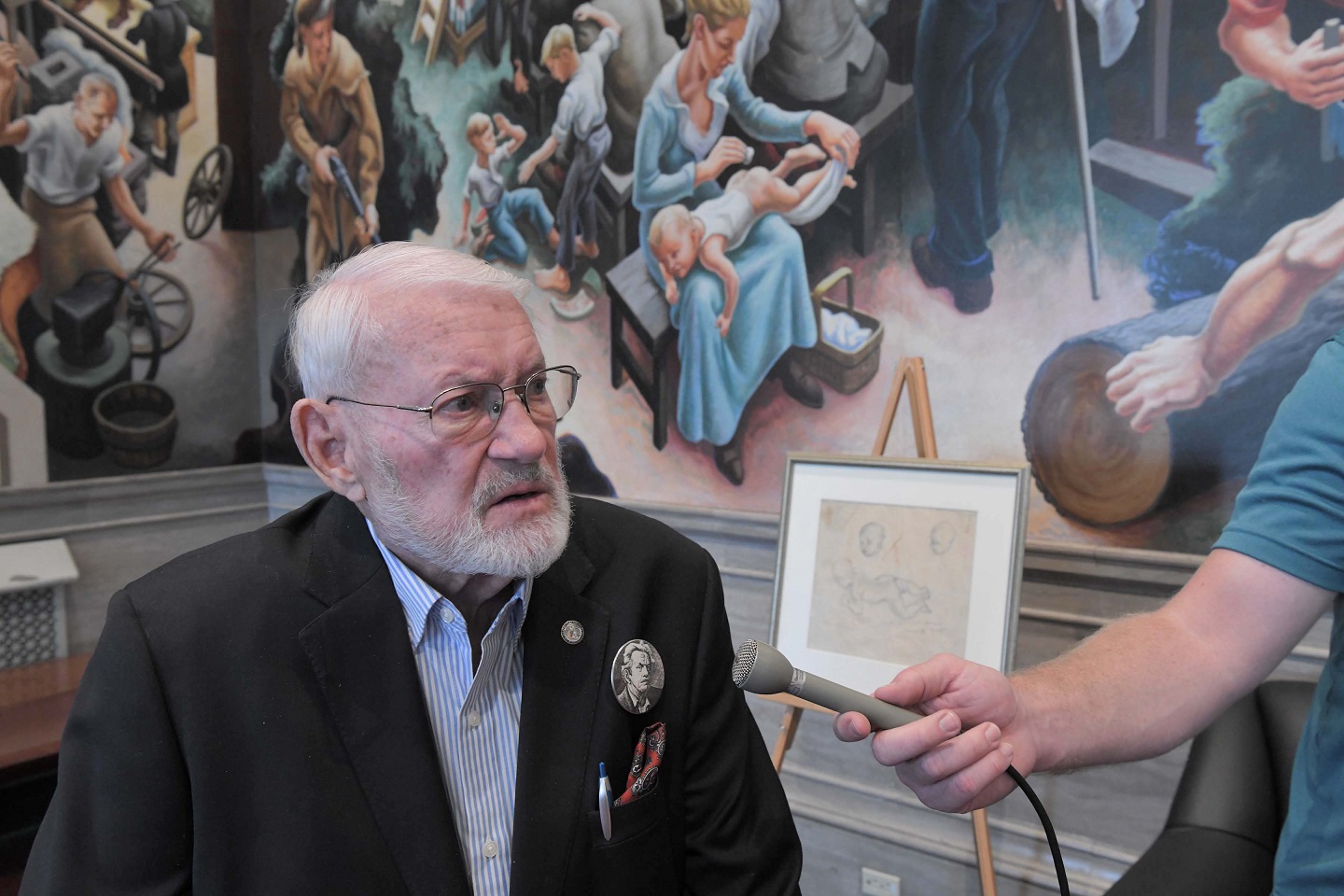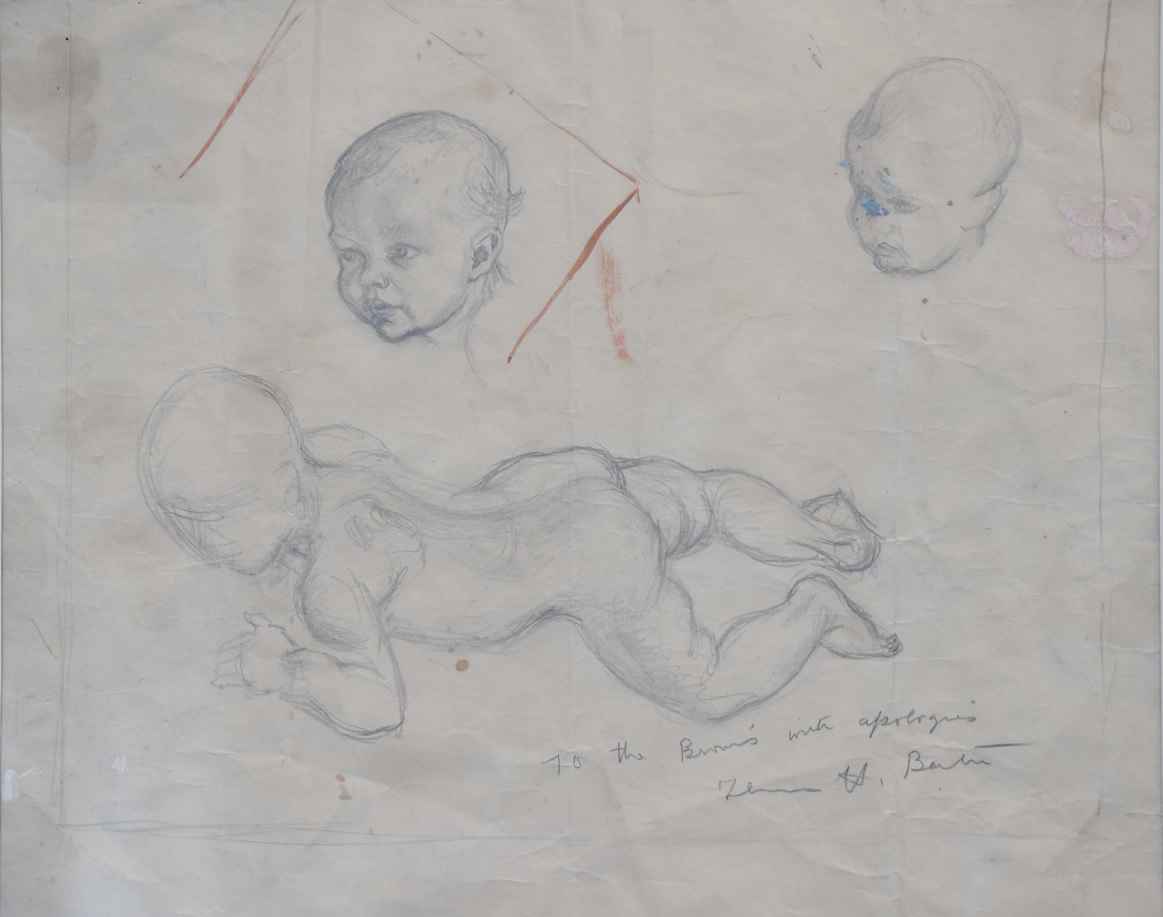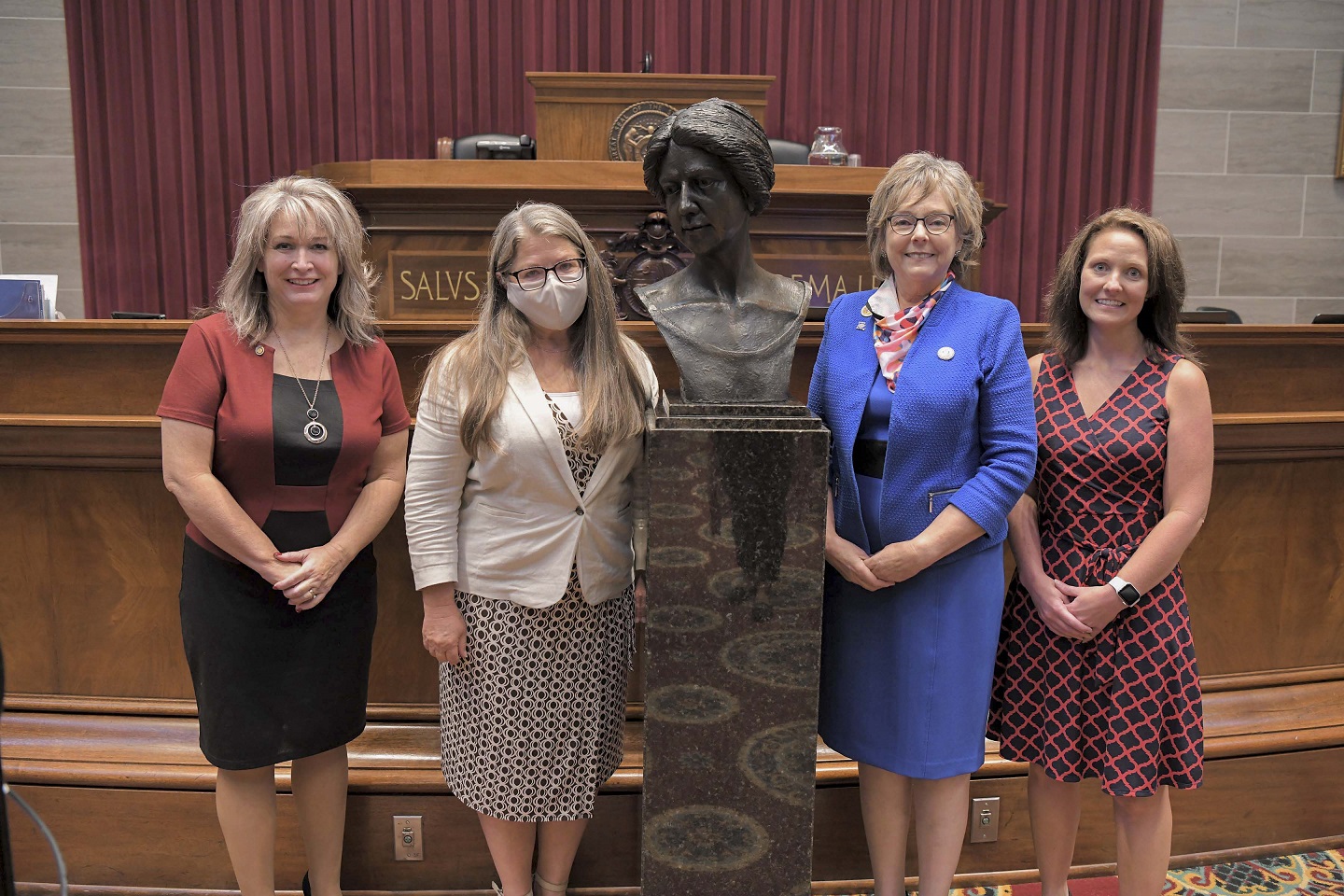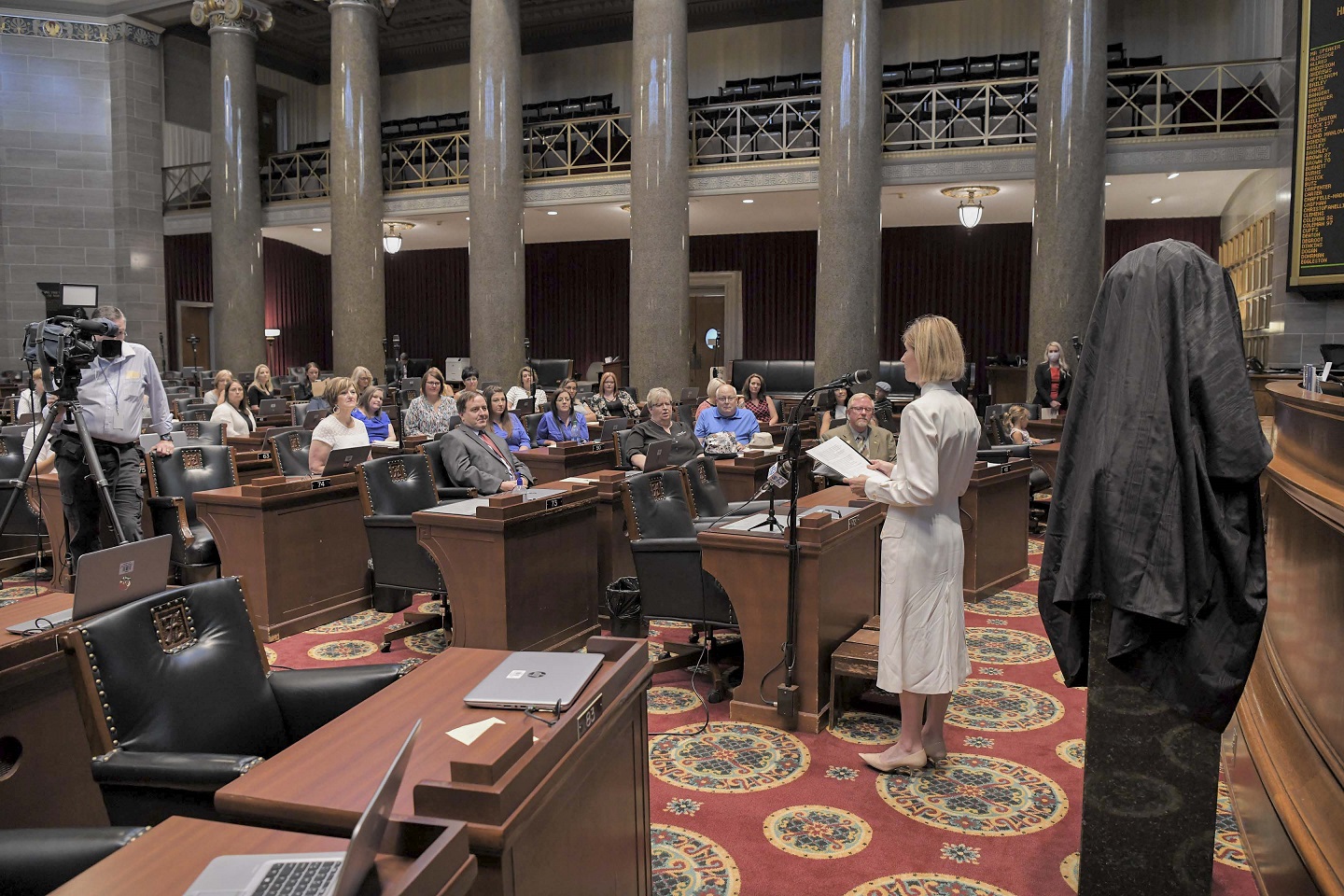House Speaker Dean Plocher and the Missouri House of Representatives are honored to announce the induction of Marie Watkins Oliver into the Hall of Famous Missourians.
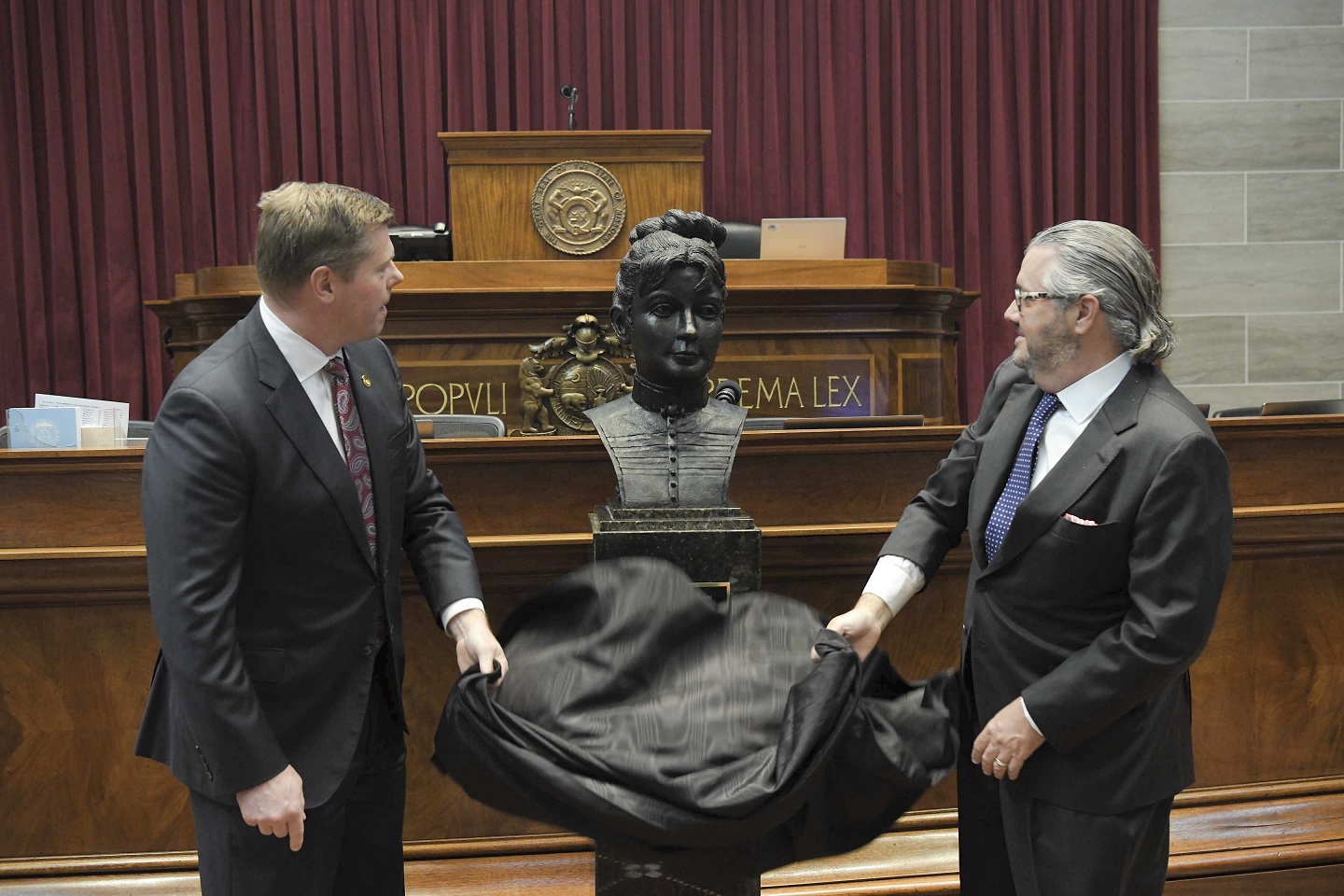
Marie Watkins Oliver, hailed as the “Betsy Ross of Missouri,” played a pivotal role in crafting the Missouri State Flag. In 1908, Oliver, the wife of Senator Robert Burett Oliver and a resident of Cape Girardeau, headed the committee formed by the Daughters of the American Revolution and took on the challenge of creating an official state flag.
Her resulting masterpiece integrated red, white, and blue, symbolizing Missouri’s federal ties while embodying local autonomy and self-governance. The central coat-of-arms denotes Missouri’s geographical significance, while twenty-four stars on the blue band mark the state’s place as the twenty-fourth state in the Union. Each color carried profound meaning: blue for vigilance, permanency, and justice; red for valor; and white for purity.
Despite setbacks, such as the loss of her original flag in a fire, Oliver’s resilience triumphed. Following numerous attempts to secure legislative approval, the Oliver Flag was officially adopted as the state flag on March 22, 1913. The silk flag she crafted stands proudly in Jefferson City, serving as a timeless testament to Oliver’s lasting legacy.
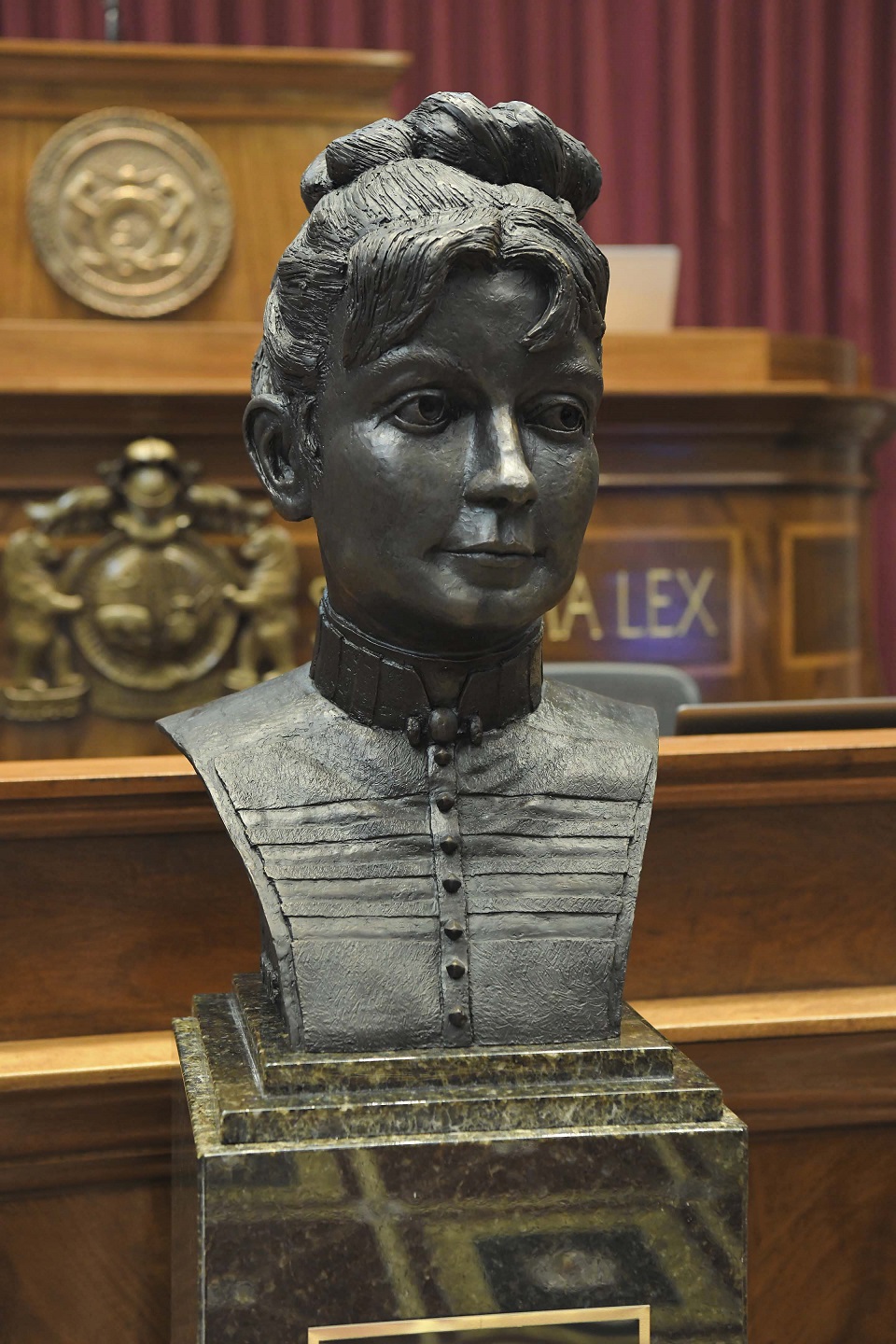
In recognition of her efforts and impact on the Show-Me State, Speaker Plocher presented the bust for Oliver as the latest member to join the Hall of Famous Missourians.
“In honoring Marie Watkins Oliver’s induction into the Hall of Famous Missourians, we celebrate not just a woman of historical significance, but a visionary who stitched together the very fabric of our state’s identity,” House Speaker Dean Plocher, R-Des Peres, said. “Like the stars on our flag, her contributions shine brightly, reminding us of the resilience and creativity that define Missouri. It’s a privilege to recognize her pivotal role in shaping our history and heritage.”




